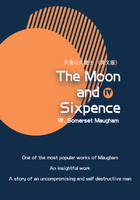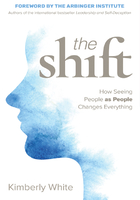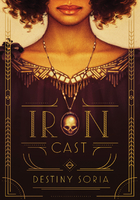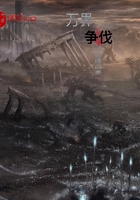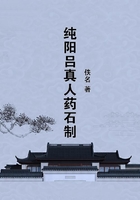The Fragmented Community and Its Transformation
The essential challenge is to transform the isolation and self-interest within our communities into connectedness and caring for the whole. The key is to identify how this transformation occurs. We begin by shifting our attention from the problems of community to the possibility of community. We also need to acknowledge that our wisdom about individual transformation is not enough when it comes to community transformation. The purpose here is to bring together our knowledge about the nature of collective transformation. A key insight in this pursuit is to accept the importance of social capital to the life of the community. This begins the effort to create a future distinct from the past.
The need to create a structure of belonging grows out of the isolated nature of our lives, our institutions, and our communities. The absence of belonging is so widespread that we might say we are living in an age of isolation, imitating the lament from early in the last century, when life was referred to as the age of anxiety. Ironically, we talk today of how small our world has become, with the shrinking effect of globalization, instant sharing of information, quick technology, and workplaces that operate around the globe.
Our world is organized around certain principles that are marketed as if they produce community, but their effects are the opposite. Here are a few:
Convenience: In earlier days, we were promised leisure time with the invention of the dishwasher, washing machine, and our own telephone line. Now we shop online, have gourmet ready-to-cook or already-cooked meals delivered to our home, speak into a device that saves our shopping list and then places the order with the grocery store for us to pick up in our car or have delivered to our home. And for a slight upcharge, the grocer will put our groceries away in our kitchen.
Speed: Speed in and of itself has become a value. Faster is better. Wait time on the phone is intolerable, so now we get automated responses, called bots. In fact, in the world of commerce, we are reaching the point where we would rather talk to an intelligent machine than to a human being. We also seem more pressed for time, valuing all things virtual.
Electronic connections: Texts, emails, Instagram, Twitter, and more make constant sharing of images and information easy and entertaining. They promise to give us more time and increased productivity; better networks are sold as a connected world.
Yet there is the question of whether any of these examples produce the sense of community and belonging that reduces our isolation and produces well-being. These developments provide contact, diverse information, an infinite range of opinion. But they do not create the connection from which we can become grounded and experience the sense of safety that arises from a place where we are emotionally, spiritually, and psychologically a member.
In addition to the changing features of modern culture, our isolation occurs because Western culture, our individualistic narrative, the inward attention of our institutions and our professions, and the messages from our media all serve to fragment us. We are broken into pieces.
One aspect of our fragmentation is the gaps between sectors of our cities and neighborhoods; businesses, schools, social service organizations, churches, and government operate mostly in their own worlds. Each piece is working hard on its own purpose, but parallel effort added together does not make a community. Our communities are separated into silos; they are a collection of institutions and programs operating near one another but not overlapping or touching. This is important to understand because it is this dividedness that makes it so difficult to create a more positive or alternative future—especially in a culture that is much more interested in individuality and independence than in interdependence. The challenge in creating a place that works for all—for youth, people with disabilities, people economically or socially isolated—is our need for a way to overcome these inherent cultural forces. This calls for a shift in narrative which says that individualism, risk, and competition are just one story of who we are; they are not the story of who we are. Our work is to shift the narrative by designing ways of coming together that become an example of the future we desire.
Creating the sense that we are safe and among friends, especially those we have not yet met, is a particular challenge for our cities and rural towns. The dominant narrative about our cities is that they are unsafe and troubled. Those we label “homeless” or “ex-offenders” or “disabled” or “at risk” are the most visible people who struggle with belonging, but isolation and apartness is also a wider condition of modern life. This is as true in our gated communities and suburbs as in our urban centers.
There is a particular isolation in the spaciousness and comfort of our suburbs. In these neighborhoods, we needed to invent the “play date” for our children. Interaction among kids must be scheduled, much like a business meeting. On Tuesday, a mom must call another mom and ask, “Can Alex play with Phil on Thursday, at our house, say about four o'clock? I'll call if we're running late. The play date should last until roughly 5:45, to give both children time to freshen up for the family get-together at dinner.” A far cry from the days when kids walked home after school and casually played with whomever they ran into.
The cost of our detachment and disconnection is not only our isolation, our loneliness, but also that there are too many people in our communities whose gifts remain on the margin. Filling the need for belonging is not just a personal struggle for connection but also a community problem, which is our primary concern in this book. We have a hundred ways of encouraging individual development, but we are semiliterate when it comes to the question of communal development. We rarely act on the insight that the way we gather, and the nature of our conversation about who we are as a collective, shift the context toward the circle and away from the pyramid as a symbol of our way of organizing ourselves. The effects of the fragmentation of our communities show up in low voter turnout, the struggle to sustain volunteerism, and the large portion of the population who remain disengaged. The struggle is also the reality for the millions of people around the world who are part of today's diaspora—the growing number of displaced people unable to return to their homeland, living and raising their children in a permanent state of transition.
Our isolation is as much an act of imagination as it is the reality of our experience. The Jews were slaves in ancient Egypt for four hundred years. Until the end, they participated in their slavery by thinking it was their destiny. Once they cried out and imagined they could be free, an alternative was put in motion. Our isolation is a modern form of slavery—a limitation, to state it more gently. The moment we realize how isolated we are, and that this isolation is not inevitable, then creating a community that ends unnecessary suffering becomes a possibility. If we stay in isolation, we will always blame ourselves and each other to explain our condition. We will stay focused on our limits, on what we lack, on our need for more money, more training, more of everything. Real change will carry the same odds as a lottery ticket.
Communities That Work for All
Community offers the promise of belonging and calls for us to acknowledge our interdependence. To belong is to act as an investor, owner, and creator of this place. To be welcome, even if we are strangers. As if we came to the right place and are affirmed for that choice.
To feel a sense of belonging is important because it will lead us from conversations about safety and comfort to other conversations, such as those about our relatedness and willingness to provide hospitality and generosity. Hospitality is the welcoming of strangers, and generosity is extending an offer with no expectation of return. These are two elements that we want to nurture as we work to create, strengthen, and restore our communities. This will not occur in a culture dominated by isolation and its correlate, fear.
In a book like this there is always the temptation to provide proof and examples of what healthy communities look like and where they exist. This is called benchmarking. There are great teams in every organization, great neighborhoods in every city, and great cities in every country. There are some examples on the abundantcommunity.com website. They give us hope and possibility. When seen as benchmarks, they make for good journalism, but benchmarking has an element of illusion built in. It implies that if I can see it there, I can create it here. The hard part of building community is that it is always a custom job. It is born of local people, with unique gifts, deciding what to create together in this place.
The intent here is to explore the concepts and tools to create the custom job of producing authentic community. How is community transformed? What fundamental shifts are involved? Too little is understood about the creation and transformation of a collective. I want to explore a way of thinking that creates an opening for authentic communities to exist and details what each of us can do to make that happen. The essence is to take a step forward in our thinking about the importance of having citizens connect with each other. The moment we decide this is essential, then we can be specific about ways to redesign every meeting, gathering, civic event so that this idea of citizens connecting, face-to-face, with each other can be put into practice. This creates the condition where people in communities can come together to produce something new for themselves. By thinking in terms of a structure of belonging, we begin to build the capacity to transform our communities into ones that work for all.
The challenge is to think broadly enough to have a theory and a methodology that have the power to make a difference, yet are simple and clear enough to be accessible to anyone who wants to make that difference. We need ideas from a variety of places and disciplines to deal with the complexity of community. Then, acting as if these ideas are true, we must translate them into embarrassingly simple and concrete acts.
This means a shift in thinking that gives us clues about collective possibility. The shift in thinking is the focus of chapters 1 through 7. Following that, we come to methodology, which many of you may consider the heart of the book. But without the shift in thinking, methodology becomes technique, and practice becomes imitation.
One key perspective is that to create a more positive and connected future for our communities, we must be willing to trade their problems for their possibilities. This trade is what is necessary to create a future for our cities and neighborhoods, organizations and institutions—a future that is distinct from the past. Which is the point.
To create an alternative future, we need to advance our understanding of the nature of communal or collective transformation. We know a good deal about individual transformation, but our understanding of the transformation of human systems, such as our workplaces, neighborhoods, and towns, is primitive at best, and too often na?ve in the belief that if enough individuals are trained and become more intentional and compassionate human beings, a shift in the culture of a community or institution will occur. Collective transformation does not happen this way.
A Future Distinct from the Past
The core question, then, is this: What is the means through which those of us who care about the whole community can create a future for ourselves that is not just an improvement but one of a different nature from what we now have?
This is why we are not focused on individual transformation in this book. Individual transformation is the more popular conversation, and the choice not to focus on it is because we have already learned that the transformation of large numbers of individuals does not result in the transformation of communities. If we continue to invest in individuals as the primary target of change, we will spend our primary energy on this and never fully invest in communities. In this way, individual transformation comes at the cost of community.
The fact that a sense of community has practical importance is probably best established in the work of Robert Putnam in his book Bowling Alone. He found that individual health, educational achievement, local economic strength, and other measures of community well-being were dependent on the level of social capital that exists in a community.
Geography, history, great leadership, fine programs, economic advantage, or any other factors that we traditionally use to explain success made only a marginal difference in the health, education, or economic strength of a community. A community's well-being simply had to do with the quality of the relationships, the cohesion that exists among its citizens. Putnam calls this social capital.
Social capital is about acting on and valuing our interdependence and sense of belonging. It is measured by how much we trust each other and how much we cooperate to make a place better. It is the extent to which we extend hospitality and affection to one another. If Putnam is right, to improve the common measures of community health—economy, education, health, safety, the environment—we need to create a community where each citizen has the experience of being connected to those around them and knows that their safety and success are dependent on the success of all others.
This is an important insight for our cities. If you look beneath the surface of even our finest cities and neighborhoods, there is too much suffering. It took the broken levees of Hurricane Katrina to expose to the world the poverty and fragile lives in New Orleans. Poverty continues to worsen, even in times of seeming economic growth. Drug addiction remains immune to all the wars against it.
Community Now
I live in Cincinnati, Ohio, which like most of our urban centers has both abundant, irreplaceable qualities and assets, and also challenges that are impossible to ignore, try as we might. Wherever we live, we are never more than a short ride from neighborhoods that are wounded with disabled buildings and people working hard to barely get by. In this culture, we marginalize these neighbors. To not see the struggle of those on the margin, to think this is the best of all possible worlds or that we are doing fine, especially if our particular street or neighborhood is safe and prosperous, is to live with blinders on.
We choose to live with blinders for good reason. There is great attraction to the suburban life, the upscale urban and rural life, and the dream of residing in “hot” places. We are constantly reminded of the allure of gated communities, quaint and prosperous small towns, nationally acclaimed golden cities. The streets we most frequently hear about in these areas are clean and busy with pedestrians, their housing a string of jewels, the center city vital and alive, and neighborhoods the source of great pride.
These prosperous places, though, are only the partial story. Take it from Jim Keene, a very wise and successful public servant. He has brought his humanity and vision into the cauldron of building community as city manager for Berkeley, Tucson, and now Palo Alto, California. Jim once said that for every city that prospers, there is another city nearby that is paying the price for that prosperity.
We know we have a shrinking middle class, a growing separation between the well off and the underclass. You cannot look closely at even the great cities in the world without seeing serious underemployment, poverty, homelessness, neighborhoods with empty buildings, a deteriorating environment, youth hanging out on street corners day and night, and concerns about public safety.
We know about the dropout rates and deplorable conditions of our urban schools and the difficulty of achieving affordable health care for all. The list goes on. But this is not the point. The question here is not about the nature of the struggles; it is about the nature of the cure. The belief here is that without the foundation of a connected community, these conditions will not improve, regardless of the money and programs we are constantly delivering.
So the focus in this book is about shifting these conditions in our communities, in both those places that are paying the price and their more prosperous neighbors. For even in prosperous places, the idea and experience of community are elusive. If you look closely, you realize that the social fabric of our culture is more fragile than we imagine.


